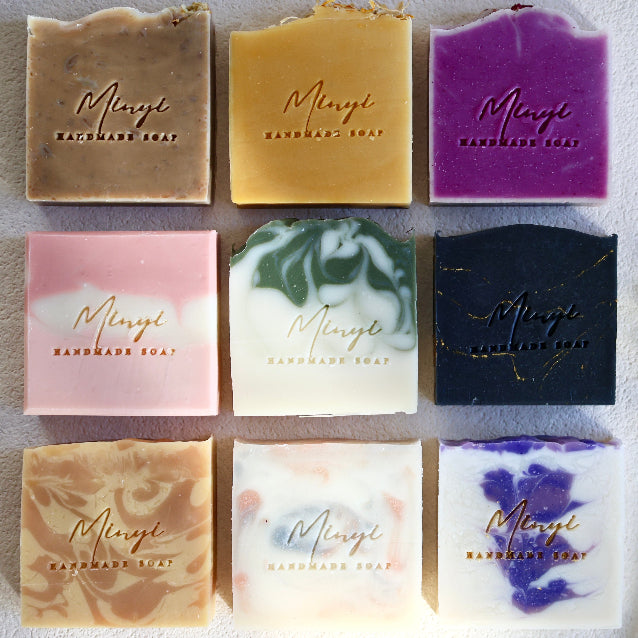Cold Process Soap vs. Factory Made Soap
How Supermarket Soap Is Usually Made—and why that matters
Production method
-

Cold process* relies on time: plant oils and lye react at room temperature (below ≈ 40 °C), and the soap cures for three-to-eight weeks.
-
How Supermarket Soap Is Usually Made? Most commercial bars are produced by hot processing: oils are boiled under steam until fully saponified, spray-dried into flakes, the naturally formed glycerin is removed, and the flakes are re-melted with fillers before being extruded and stamped—often within 24 hours.
Ingredients
-
Cold process* recipes start with food-grade oils (olive, coconut, castor, shea) and keep the glycerin created during saponification. Makers can fold in botanical powders, clays and essential oils for colour or aroma.
-
Factory bars* commonly remove the glycerin for resale, then add synthetic foaming agents, fragrance, colourants and preservatives chosen for cost and shelf-life.
Skin feel
The long cure lowers alkalinity and leaves a trace of unsaponified plant oil, so cold process soap creates a creamy lather that cleans without stripping the skin’s lipid barrier. Factory bars are more alkaline and, lacking glycerin, can leave normal or dry skin feeling tight or “squeaky.”
Environmental footprint
Cold process production consumes little energy—no continuous boiling or spray-dry towers—and the finished bar needs no plastic bottle. Its lather biodegrades quickly. Factory processes rely on steam heat and synthetic additives that may persist in wastewater.
Takeaway: cold process soap depend on time and botanicals; hot process bars depend on heat and additives. Though they share the word “soap,” their making, feel, and ecological impact are worlds apart.


